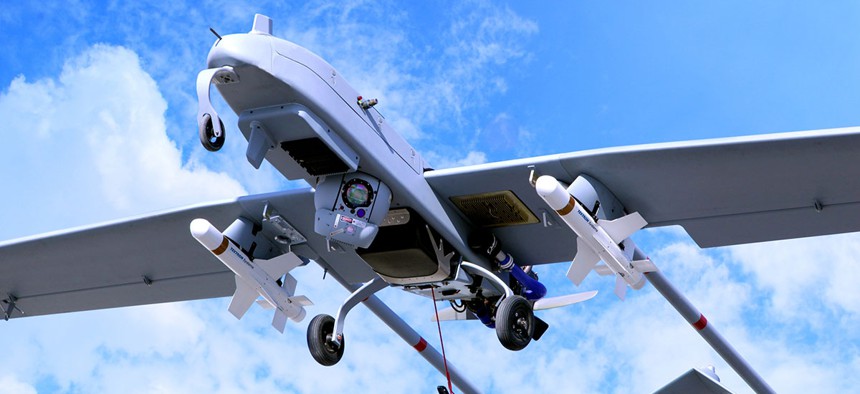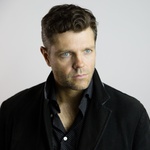
The Shadow UAV TEXTRON
Drone-Helicopter Teams Performing ‘Very Well’ Against ISIS
Future unmanned-human teaming looks a lot like the Predator’s little cousin.
Over the smoking sands of Iraq, the military is coming to rely on formations of 20-foot drones, working with Apache attack helicopters against the Islamic State. Such operations have just pushed the Textron Shadow UAV past 1 million flight hours, becoming the first of the Army’s mid-range, or Group III drones, to hit that milestone.
The Army is now talking publicly about the first heavy attack reconnaissance squadron to deploy and return with the Apache-Shadow combination, the service’s Shadow product manager told reporters in a conference call on Monday. That would be 3-6 Cavalry out of Fort Bliss, Texas, which returned from Iraq two weeks ago.
“We are starting our after-action reviews with them, from an Apache standpoint and a Shadow standpoint, going and talking to the unit, how did the mission go, said. Lt. Col. Tory Burgess. “The information that we’re getting back is that the Shadows performed very well.”
The Shadow that actually took the type past the 1-million-hour mark belongs to the 2nd Cavalry Regiment in Germany, Burgess said.
“It took us a day or two, but we dove down and determined that that was the crew,” he said.
Compared to the more famous MQ-1 Predator or the larger MQ-9 Reaper, the Shadow, introduced in 1999, is smaller — small enough to launch from a catapult. It is also far less costly; Textron doesn’t disclose the price, but it’s a good deal less than the $5 million Predator or a $13 million Reaper. As a Group III drone, it lacks the range of the Group IV aircraft. It’s not a bird you pilot from the other side of the world, but that matters less to some of the potential government buyers of today’s ISR and armed drones.
Every service “would like the Group IV capability inside a Group III that’s runway-independent,” said Burgess. Read that to mean a drone that works like a Predator, but that you don’t need a runway to launch, and that’s what a smaller drone gives you.
They aren’t alone.
“There has been a lot of interest in this system or variance of this system in the Middle East region as well as several countries in Europe,” Textron senior vice president William Irby told reporters on a call on Monday. One of the Ukraine government’s enduring wish list requests is drones that can withstand jamming from top-of-the-line Russian electromagnetic warfare equipment and techniques.
The Shadow can be armed; Textron has spent a lot of its own money to demonstrate with a light Hellfire-esque missile called the Fury, modified from a Thales design. But the Army currently has no plans to missile-up the Shadow for combat and current arms trade restrictions prohibit Textron from selling armed variants of the drone to other militaries.
But the appetite is present in the Middle East. And rival weapons-making nations are anxious to meet new demand. Consider the burgeoning market for small, armed Chinese drones in Saudi Arabia, the United Arab Emirates, and Egypt.
Regardless of whether the Pentagon ever puts missiles on the Shadow, or allows it to sell armed variants abroad, the U.S. military sees the drone as a key part of the Army’s arsenal until 2030. They will look to improve the drone with more laser designators to help targeting.
“Currently, a platoon of four air vehicles only has two laser designators and two non-laser designators associated with it,” said Burgess.
They’re also looking to toughen the Shadow against bad weather, two inches of rain per hour, mostly so the drones, operated on the ground, can keep up with helicopters.
“While you can’t see much in two inches of rain per hour," he said. "You can be a better teammate with your Apache partner. So as we look at manned-unmanned teaming, we need to be able to fly in the same sorts of environments that the Apache does.”
The last big area of improvement for the Army is making the Shadow easier for service people to operate, to “make it easier on the soldier operator… It’s very important to us to take the load off the soldier.”
NEXT STORY: Where Does Trump Stand on Libya?







